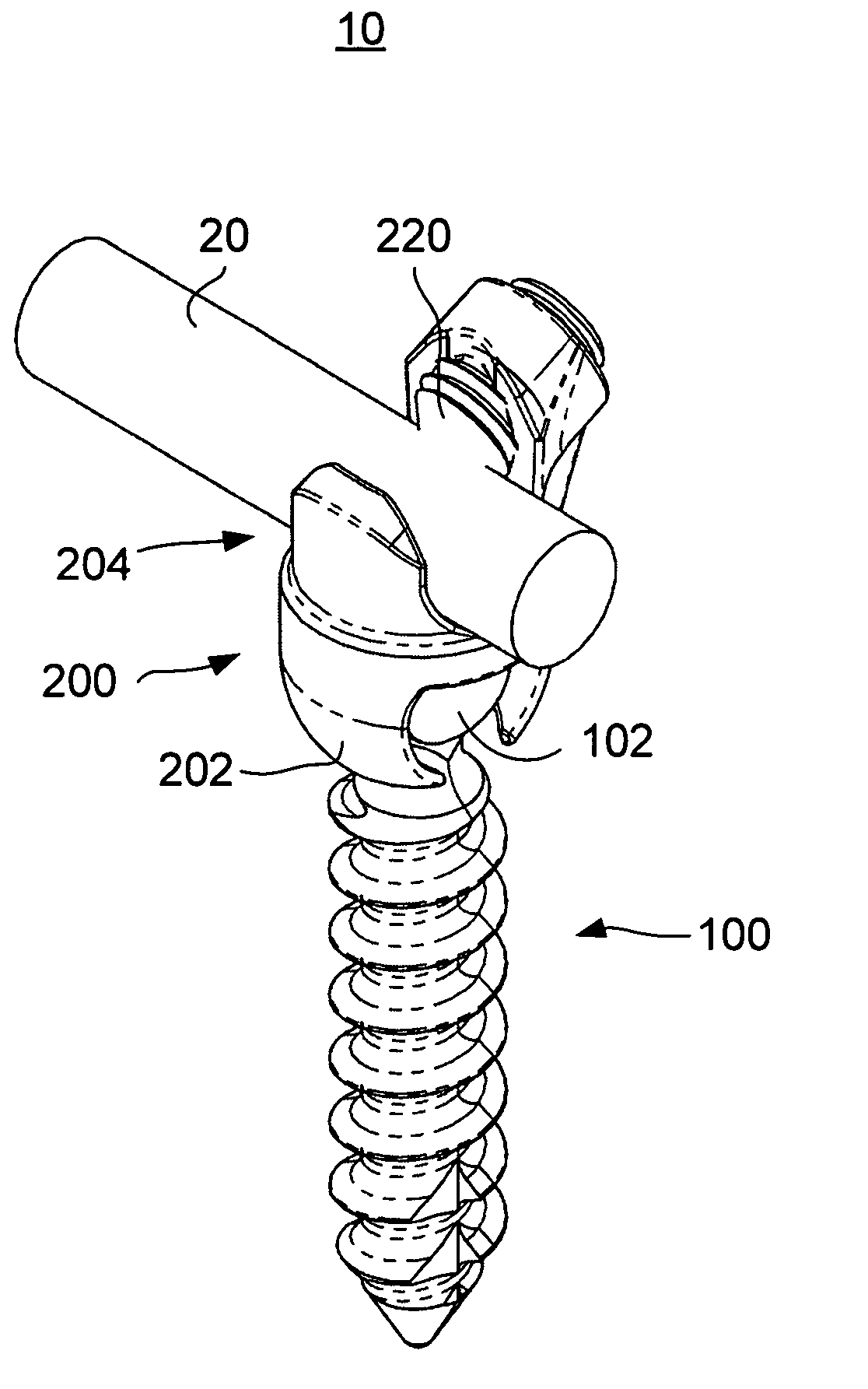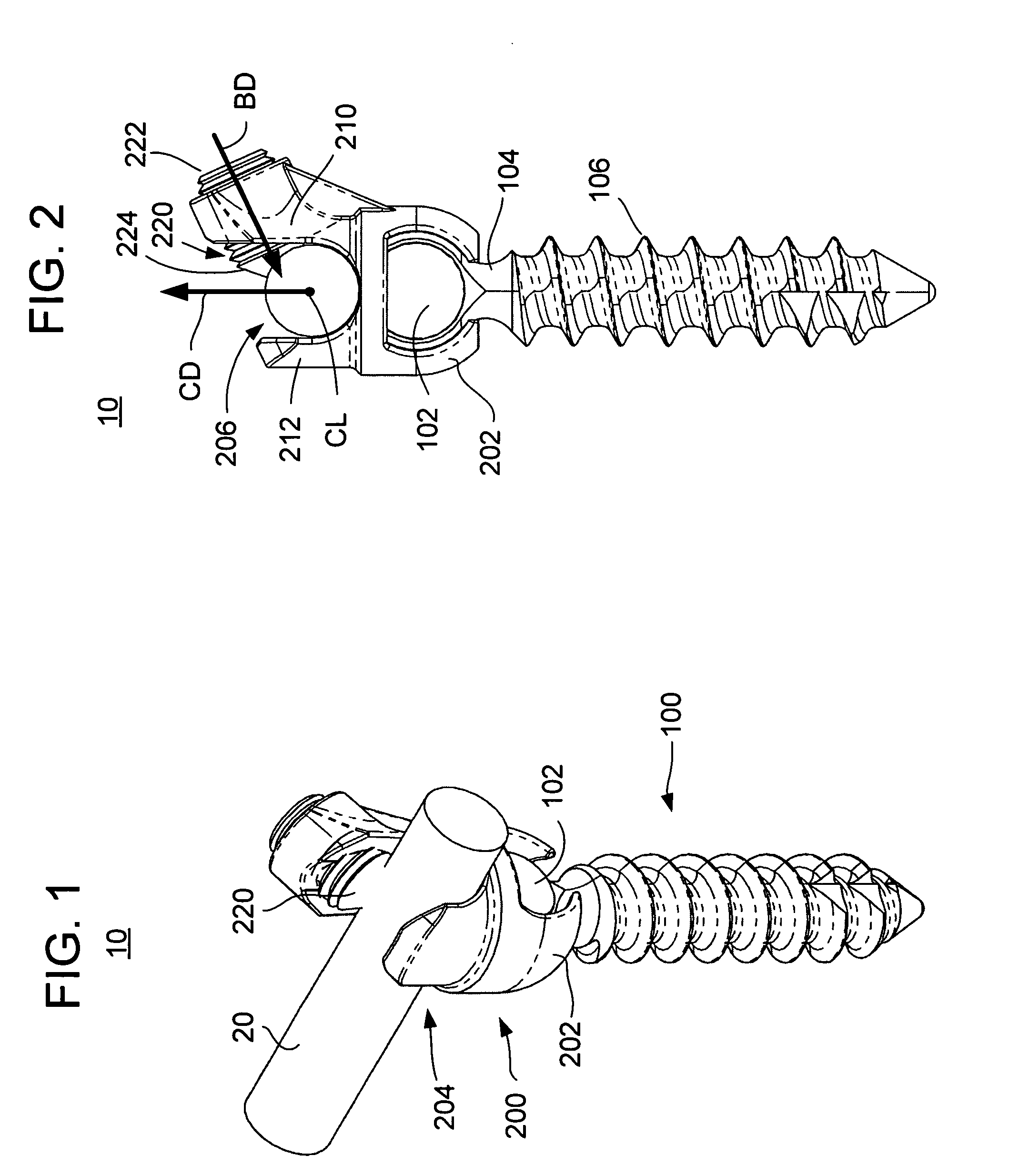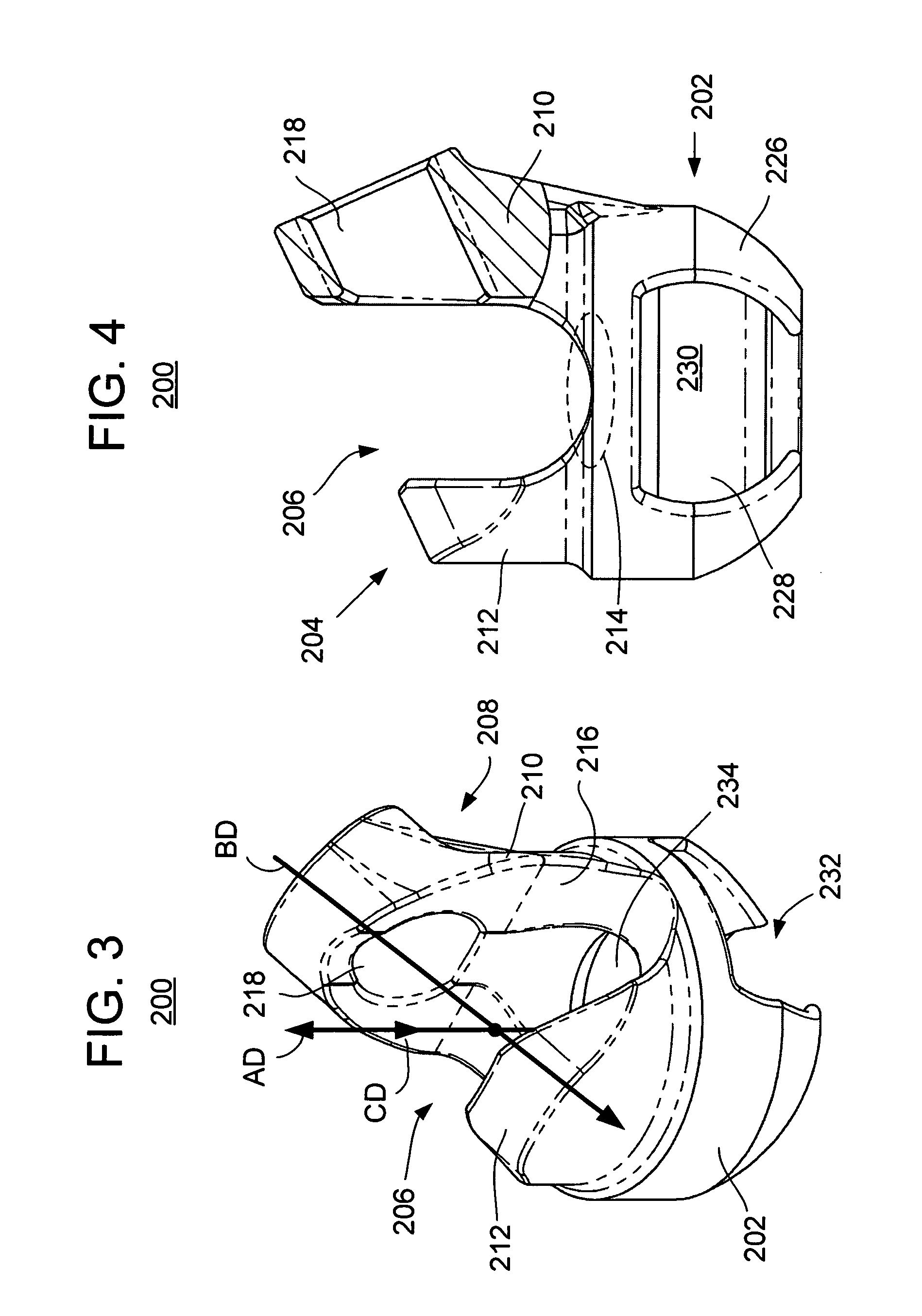Spinal stabilization using bone anchor and anchor seat with tangential locking feature
a technology of bone anchor and tangential locking feature, which is applied in the field of vertebral stabilization of the spine, can solve the problems of compromising the quality of life of a person, the most common and often debilitating conditions affecting millions of people, and back pain
- Summary
- Abstract
- Description
- Claims
- Application Information
AI Technical Summary
Benefits of technology
Problems solved by technology
Method used
Image
Examples
Embodiment Construction
[0044]FIGS. 1-4 illustrate an embodiment of a spinal stabilizer system 10 in accordance with one or more aspects of the present invention. In use, it is understood that respective pairs of the stabilizing systems 10 may secure an elongate element, such as a stabilization rod, for internal fixation of respective bones of a patient, such as vertebrae of the spine.
[0045] The system 10 includes an anchor 100 and an anchor seat (or tulip) 200 that cooperate to fix a portion of a rod 20 to a bone. The bone anchor 100 includes a head 102, a neck 104, and a shaft 106, where the neck 104 interconnects the head 102 and the shaft 106. The shaft 106 extends away from the head 102 and is operable for connection to the bone of the patient. For example, the shaft 106 may include threads that may engage a bore made in the bone such that the anchor 100 is secured to the bone of the patient. In this embodiment, the bone anchor 100 and the tulip 200 are two separate pieces that are coupled together. ...
PUM
 Login to View More
Login to View More Abstract
Description
Claims
Application Information
 Login to View More
Login to View More - R&D
- Intellectual Property
- Life Sciences
- Materials
- Tech Scout
- Unparalleled Data Quality
- Higher Quality Content
- 60% Fewer Hallucinations
Browse by: Latest US Patents, China's latest patents, Technical Efficacy Thesaurus, Application Domain, Technology Topic, Popular Technical Reports.
© 2025 PatSnap. All rights reserved.Legal|Privacy policy|Modern Slavery Act Transparency Statement|Sitemap|About US| Contact US: help@patsnap.com



